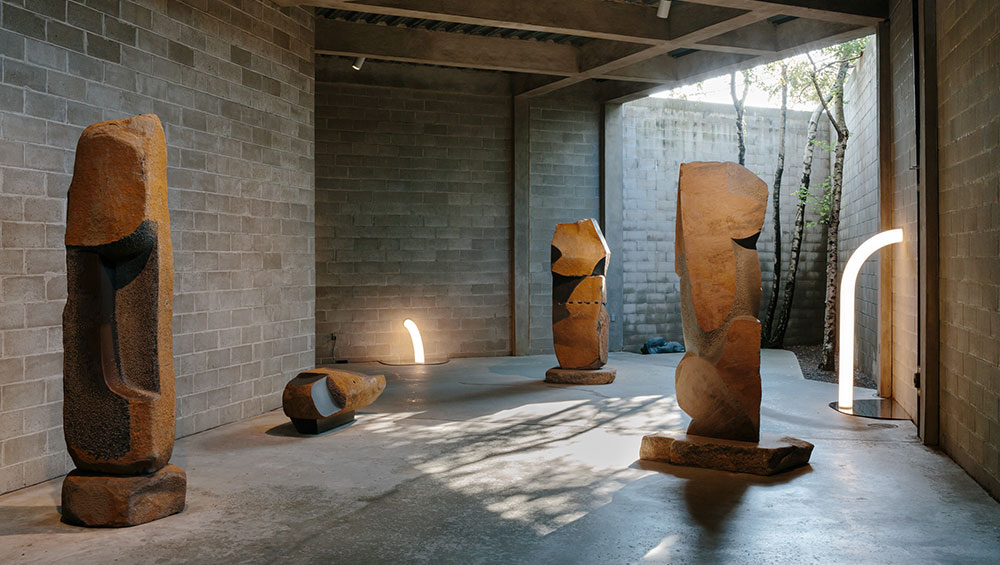
Objects of Common Interest, Tube Light I and Tube Light II, 2019, installed among Isamu Noguchi’s late-career basalt and Manazuru stone sculptures in The Noguchi Museum’s indoor-outdoor gallery, Area 1. Photo: Brian W. Ferry. ©INFGM / ARS.
Isamu Noguchi Foundation and Garden Museum, New York
15 September 2021 – 13 February 2022
by LILLY WEI
The Noguchi Museum (officially, the Isamu Noguchi Foundation and Garden Museum) in Long Island City is a gem. While not exactly hidden, it remains, blessedly for its visitors, what it has always been, and hopefully will always be: a sanctuary far (enough) from the madding crowd and the incessant metropolitan thrum. To enter its tranquil grounds and galleries is to leave your cares at the door, to be retrieved later, or, better yet, to find that they have become fewer, if not vanished, as Noguchi’s art wields its spell.
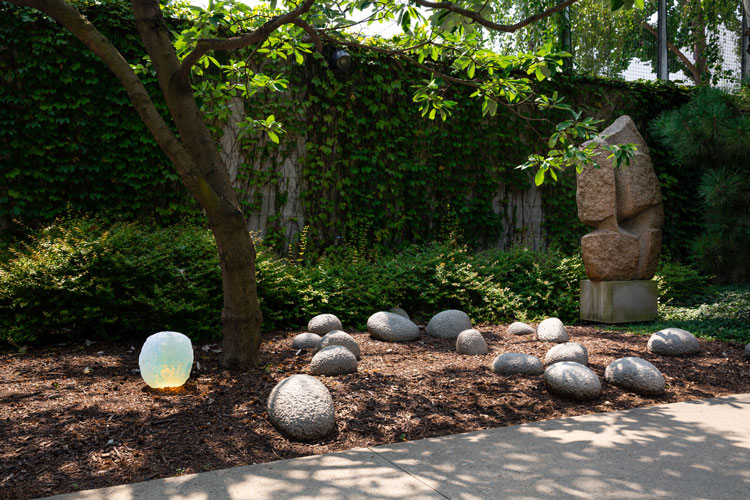
Objects of Common Interest, Offerings–Rock III, 2000, joins Isamu Noguchi’s Practice Rocks in Placement, 1982–83. Photo: Brian W. Ferry. ©INFGM / ARS.
All the museum’s shows are based on Noguchi’s work and for this current exhibition, Eleni Petaloti and Leonidas Trampoukis of Objects of Common Interest, an art, design and architectural studio based in Athens and New York, and co-founders of LOT Office for Architecture, present their response to the eminent Japanese American sculptor and architect (1904-88), insightfully curated by Dakin Hart, the Noguchi’s senior curator. Objects of Common Interest: Hard, Soft, and All Lit Up with Nowhere to Go, the show’s intriguing title, begins in the museum’s imposing semi-enclosed, semi-open antechamber lanced by shafts of light today; on other days, other weather elements prevail. With its rough concrete floors, block walls and several late Noguchi sculptures as sentinels, as the gods of place, it conjures the ambience of an austere ancient temple.
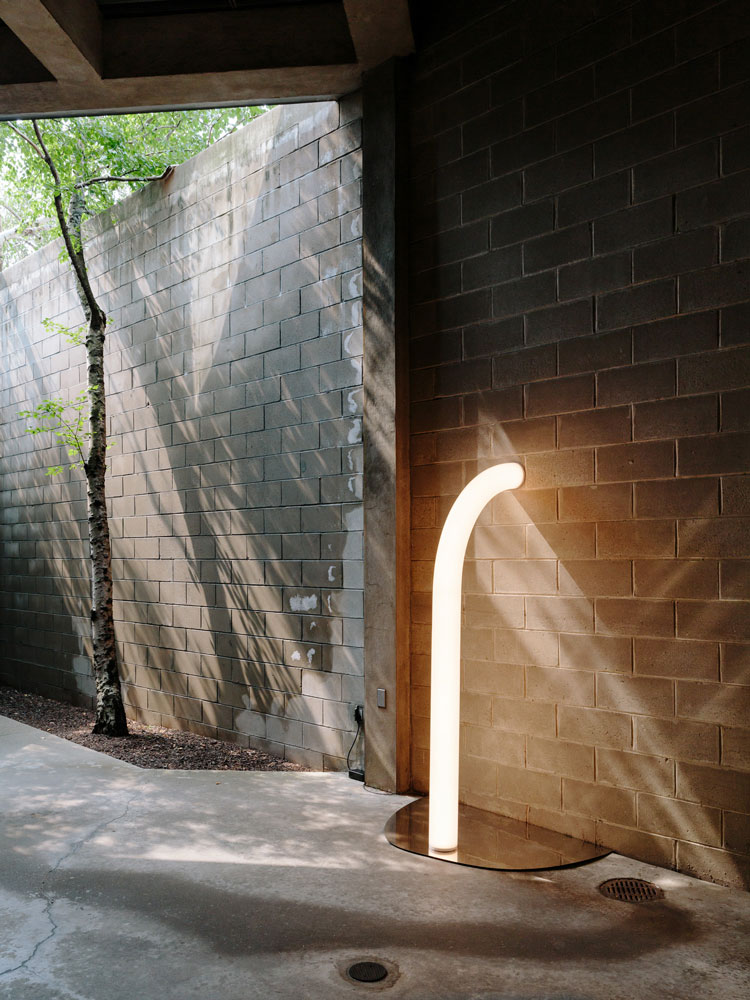
Objects of Common Interest: Hard, Soft, and All Lit Up with Nowhere to Go, installation view. Photo: Brian W. Ferry. ©INFGM / ARS.
Into this installation, Petaloti and Trampoukis have introduced three curved tubes of light, two lower to the ground, the other more vertical, nearly life-sized, arching into the wall, each rising from a polished metal plate that mirrors it. It is a contrast that activates the differences between disparate objects – one of stubborn, impermeable, bulky, natural stone; the other balletic, luminous, trim, man-made, contemporary – while simultaneously forging connections between them.
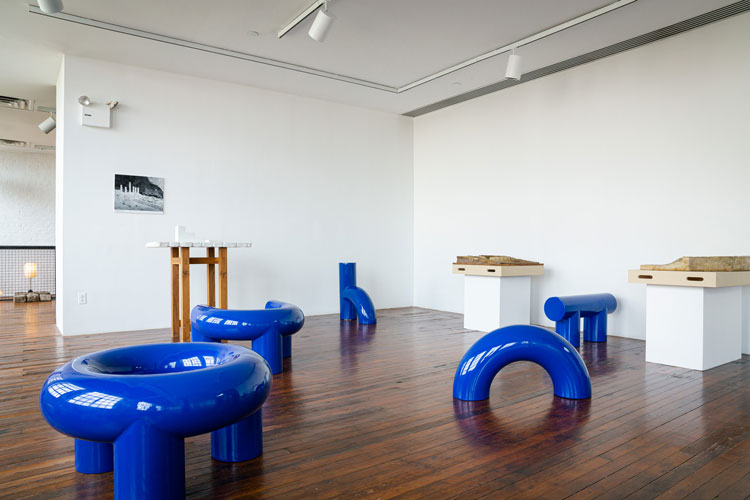
Objects of Common Interest: Hard, Soft, and All Lit Up with Nowhere to Go, installation view. Photo: Brian W. Ferry. ©INFGM / ARS.
The theme of convergence and divergence threads itself throughout the show, with Petaloti and Trampoukis questioning – wittily, playfully – what constitutes the nature of art and design and the relationships created in the interactions between objects. It is a bit of a treasure hunt, their works popping up in the garden and the permanent installations, and as interventions in Noguchi’s show: Useless Architecture. In the latter, a cohort of electric-blue steel objects called Formations (2018) have been interspersed among the Japanese artist’s sculptures. They are close to the ground and can be functional, in opposition to the columnar or pedestalled stone carvings of Noguchi. Several of the smaller, movable pieces recall the post-and-lintel system of classic Greek architecture, say, or perhaps the symbol pi, among other possible references.
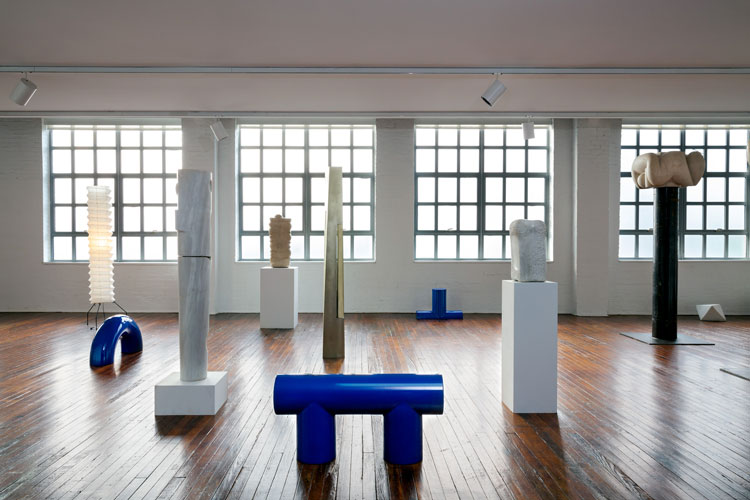
Objects of Common Interest: Hard, Soft, and All Lit Up with Nowhere to Go, installation view. Photo: Brian W. Ferry. ©INFGM / ARS.
Noguchi was a seasoned traveller, at home everywhere, and global before it was commonplace. What he, Petaloti and Trampoukis also share is a love of Greek culture, Greek landscape, and its ineffable, transportive light. Greece was a country for which Noguchi felt a strong kinship; he once said: “Greece … Oh, it’s my love. I feel as if I were born here.”

Doric Columns, 2020. Installation view, Objects of Common Interest: Hard, Soft, and All Lit Up with Nowhere to Go, INFGM.Photo: Lilly Wei.
Petaloti and Trampoukis refer to Noguchi’s affinity for Greece in multiple works, one of which is their charming, comic send-up of a Doric column cheekily sparring with Noguchi’s ventures into Hellenic architectural syntax. Called (what else?) Doric Columns (2020), two colourful columns, sectioned like ancient Greek columns, are suited up in broad ribbons of industrial fabric, mimicking the vertical grooves of a shaft. They can be turned on to gyrate, causing the drums to vibrate, the bands of one of them swirling upward, in a kind of literal “strip” tease?
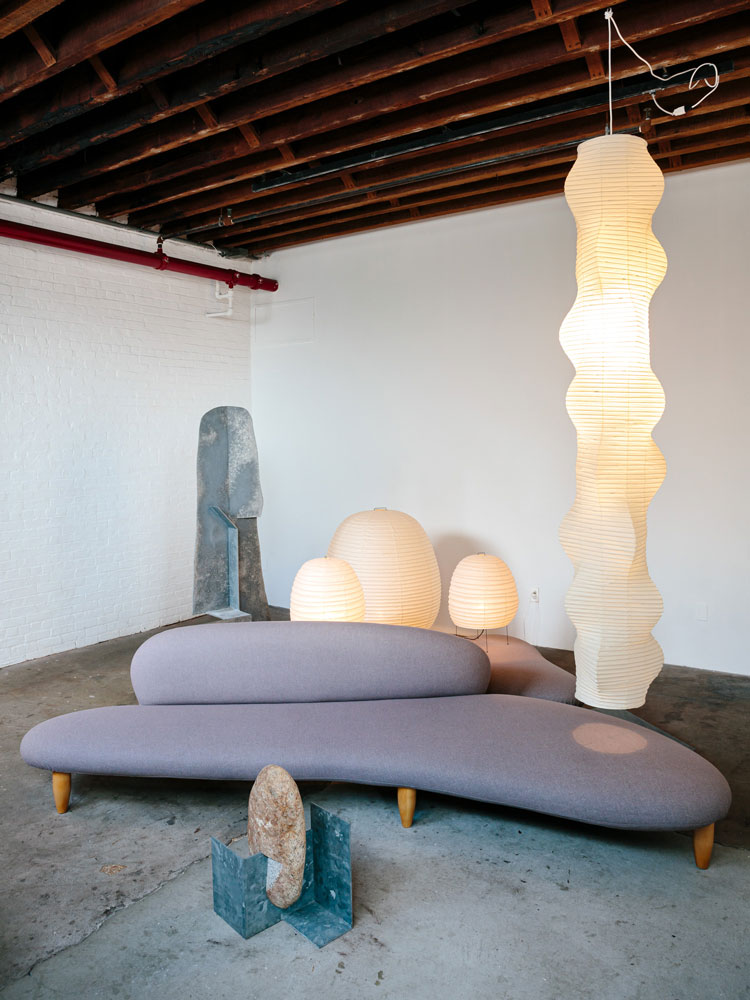
Objects of Common Interest 'Lounge' with Inflatable Lights, 2021, Tube Light Columns, 2019, Metamorphic Rocks, 2021, Tube Chair, 2018, and Rock Side Tables, 2021. Photo: Brian W. Ferry. ©INFGM / ARS.
In the lounge area, there are examples of Petaloti and Trampoukis’ deceptively pillowy-looking foam chairs (they are hard, not soft), covetable tables of opal resin, simple rock formations made of cast gel on casters that could double as seats or stands, and light fixtures of clear inflatable plastic or twisty light tubes that pay homage to Noguchi’s signature Akari paper lamps, but are distinctively their own in form and materials.
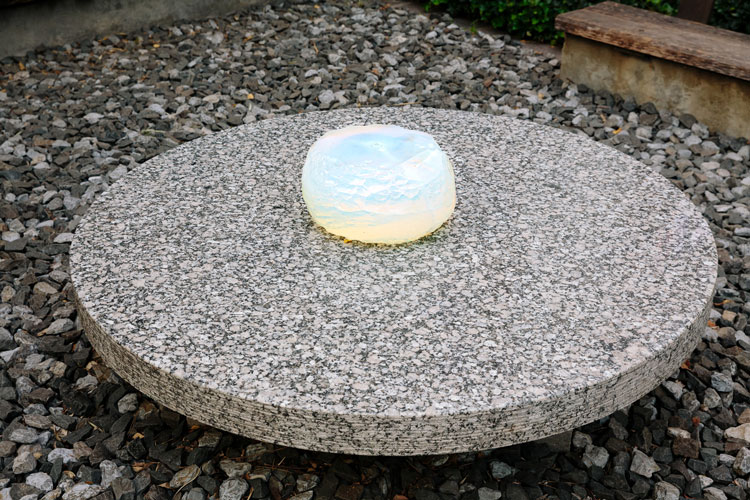
Practice Rocks in Placement, 1982–83. Aji granite Garden Table, 1983 Granite. Photo: Brian W. Ferry. ©INFGM / ARS.
In the museum’s improbably serene garden, the duo have felicitously placed examples of their Offerings series – Rocks II and III (2000) and a Standing Stone (2019). The former, of opal resin, depending on available light, glows with otherworldly incandescence, as if they had fallen to Earth from another galaxy.
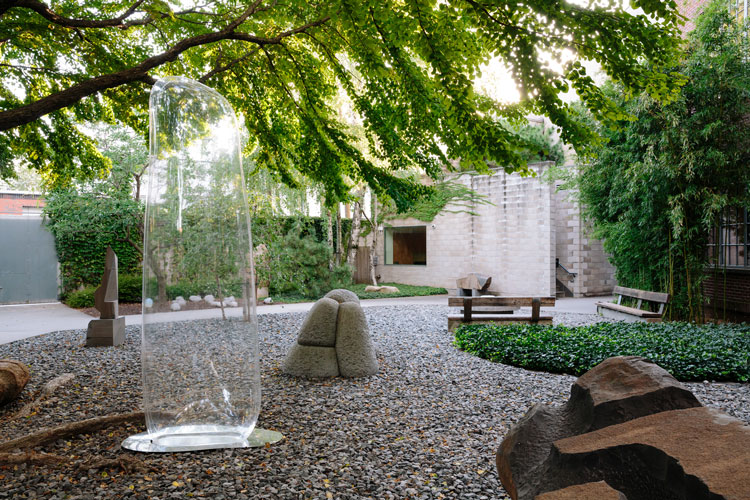
Objects of Common Interest: Hard, Soft, and All Lit Up with Nowhere to Go, installation view. Photo: Brian W. Ferry. ©INFGM / ARS.
Standing Stone, a tall, clear plastic inflatable resembles a Noguchi standing sculpture except that it is all air shaped by a transparent shell while the former is all solid. It, too, summons ghosts and is also, perhaps, a gift from aliens. On the other hand, and more practically, these shelters for one, as I think of them, in the time of Covid-19 seem perfect for social distancing while also allowing proximity, company.
Hard, Soft, and Nowhere to Go underscores the junction of aesthetic philosophies that embraces design, reminding us that its definition is far-reaching, fluid, encompassing multiple aspects of our daily lives and enriching them: art for life’s sake as well as for art’s.